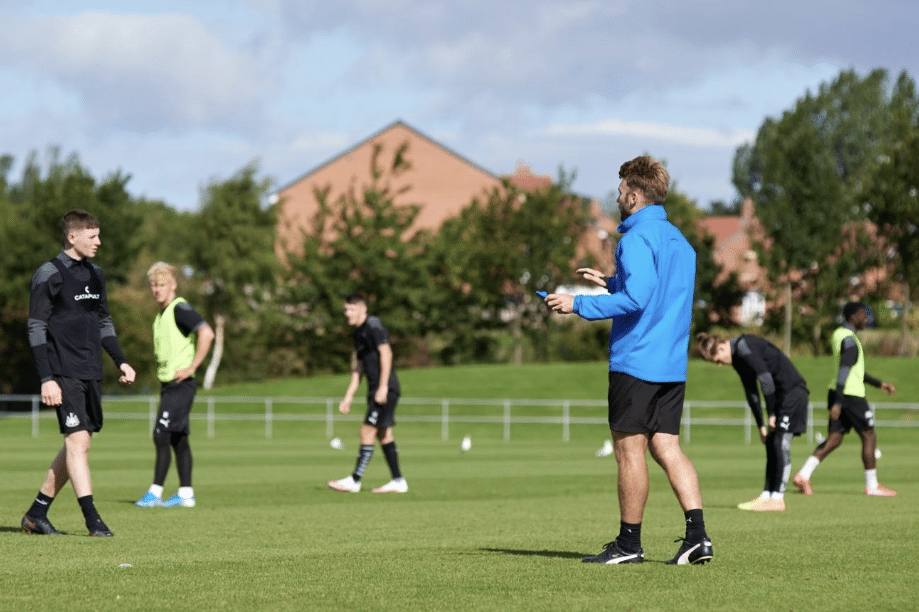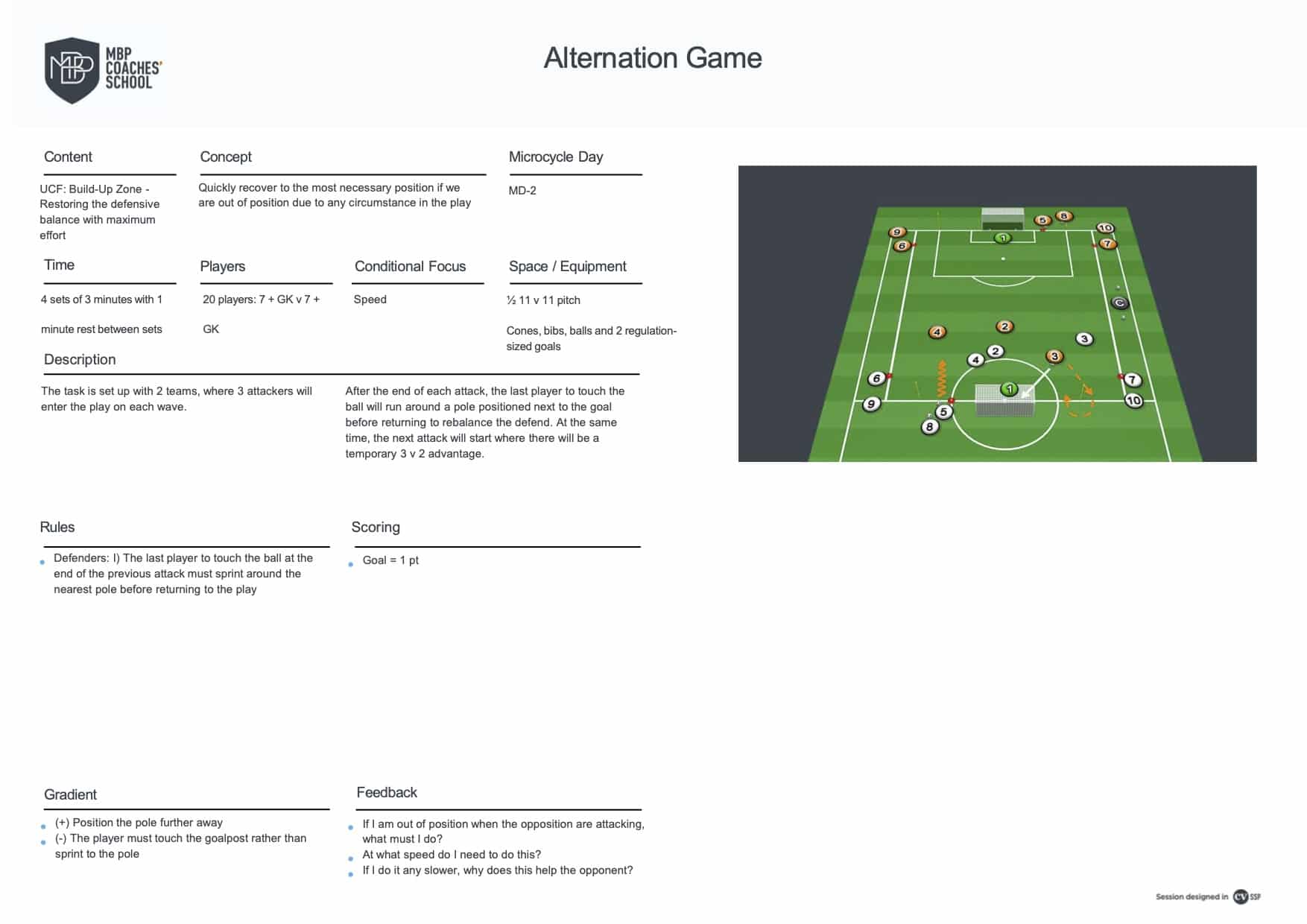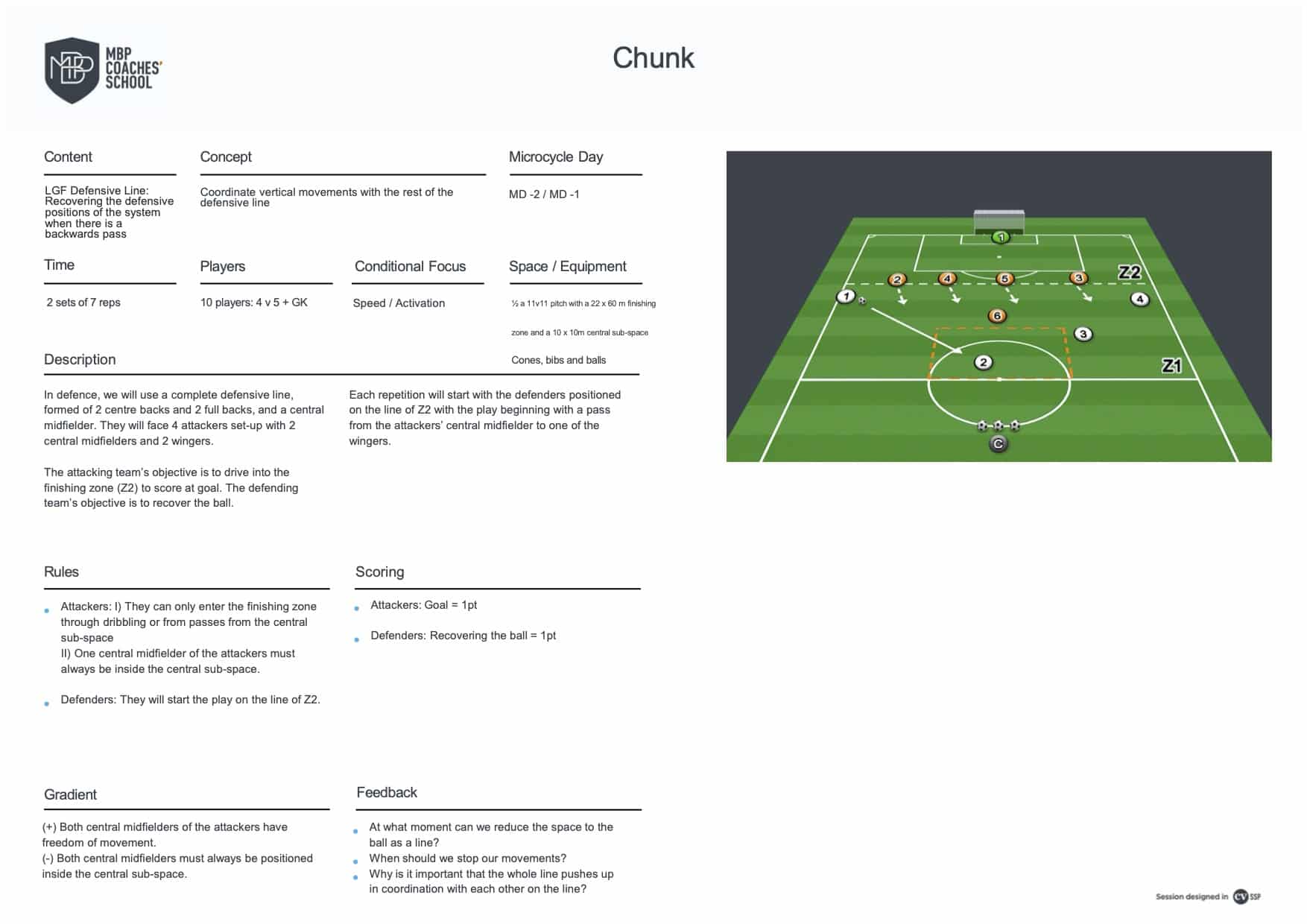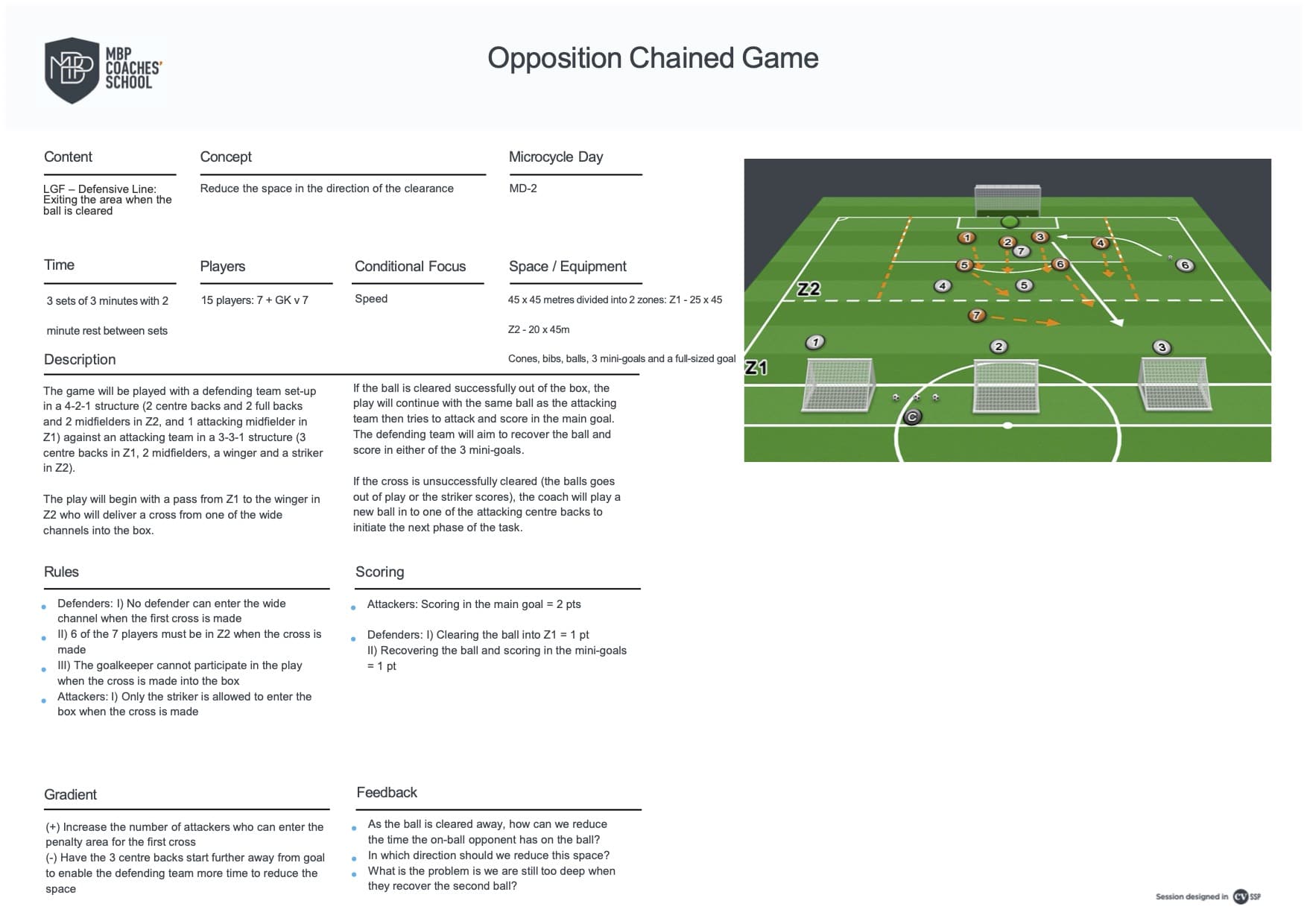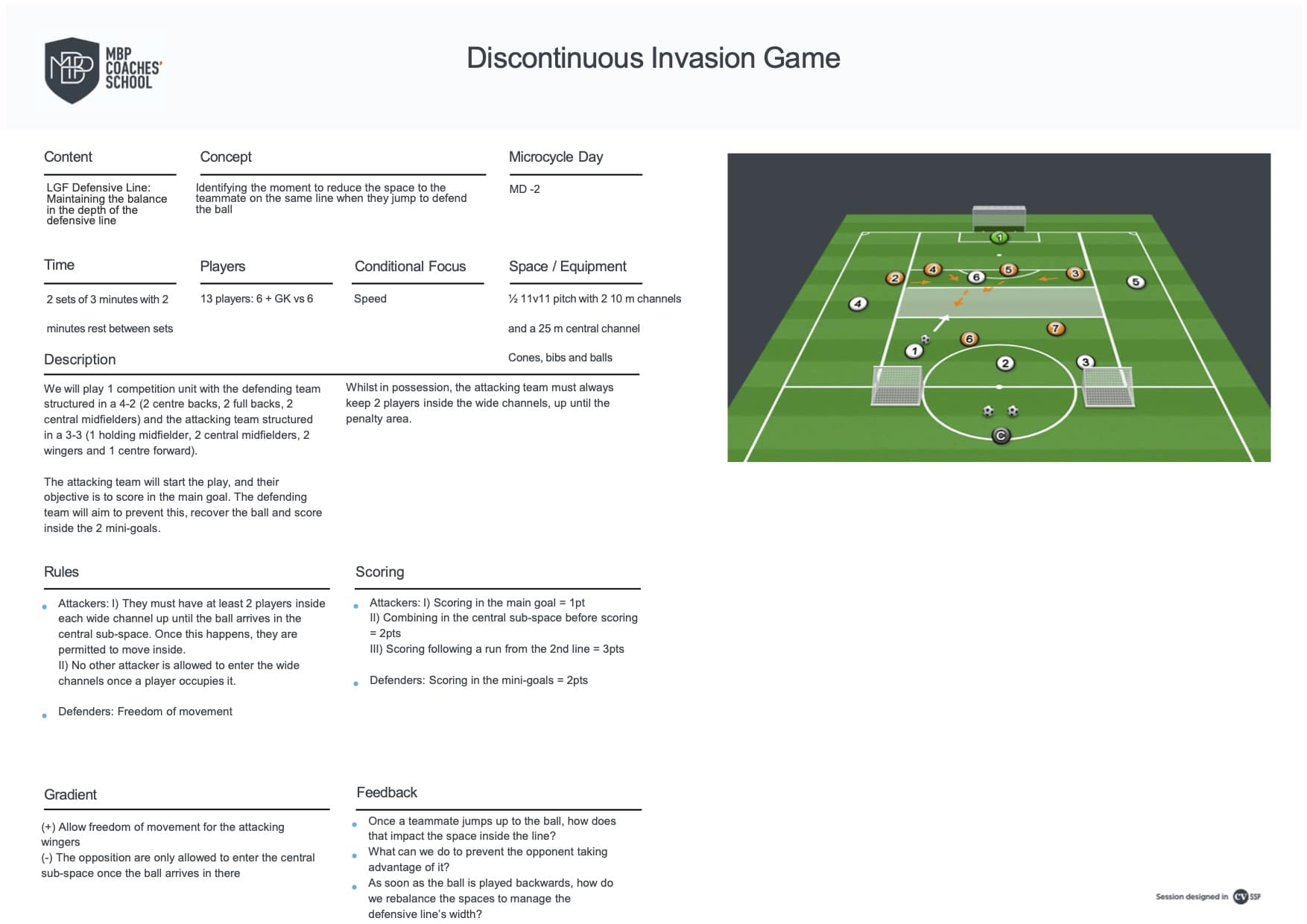To determine which didactic strategies we can use in MD-2, it is important to understand the characteristics of this day in the microcycle, not only in terms of conditioning, but also in terms of what content should be trained, what type of spaces to use, the recommended number of players, etc. How do you organise your weekly microcycle? What tasks do you use in each session? In this blog, we will show you some examples of didactic strategies that you can use in sessions two days before the competition.
MD-2 stands out for its focus on the contraction of speed, meaning that the tasks will mainly seek high-speed actions. This implies that the spaces are medium-sized (similar to the midfield), with an approximate number of players between 5v5 and 8v8. This allows us to train on two lines of the team, so the competitive intensity will be slightly lower than in competition.
Therfore, taking into account the characteristics described, we present four examples of tasks that you can use on that day of the week.
1. Alternation Game
The first didactic strategy is an alternation game, which is very useful for the activation phase of the session to train basic fundamentals or universal collective fundamentals. Its format allows for high-speed actions, a key aspect on this day of the microcycle.
In the above example, the universal collective fundamental of ‘restoring the defensive balance with maximum effort’ is practised, with an obvious conditional component for the team defending the counterattack, having to sprint around the pole before rebalancing the defensive position. This puts your team at a momentary numerical disadvantage and requires them to apply the fundamental to restore defensive balance.
2. Chunk
The second didactic strategy involves a chunk for training the defensive line’s group fundamental of ‘recovering the defensive position when there is a backward pass’. As this is a highly specific didactic strategy, it is very useful for the activation phase or just before the main task, in order to introduce defensive concepts related to the match plan.
In this case, the work focuses on the team’s defensive line, attempting to reproduce very specific game situations. To do this, we want to force the attacking team to pass the ball back and forth, forcing the defensive line to reset its initial position without dropping back into the area.
3. Opposition Chained Game
The following didactic strategy is a chained opposition game, which consists of merging two different didactic strategies to reproduce a specific game situation. In this case, the two merged strategies are a chunk and a discontinuous invasion game. It could be used after the activation phase and before the main task of the session.
The main content of the task is, once again, a line group defensive fundamental: ‘exiting the area if the ball is cleared’. To do this, the sequence begins with a cross into the area and continues once the ball is cleared. As this is a discontinuous task, it does not place a great load on the players, making it ideal for use in the days leading up to a competition..
4. Discontinuous Invasion Game
The last didactic strategy we present is a discontinuous invasion game. As its name suggests, it involves discontinuous situations of attacking the goal and, therefore, allows for high-intensity repetitions with complete recoveries between repetitions/sets. It is ideal for use before the main task of the session or even as the main task in MD-2.
The training content is, once again, a group defensive line fundamental: ‘maintaining the balance of the defensive line in depth’. To do this, a complete defensive line is used with two defensive midfielders in front and two attacking lines (three central midfielders and three forwards) to force the defenders to reduce the space between themselves and the forward receiving the ball, while the rest maintain the balance of the line in depth. By not using the entire squad for the task, players can be changed constantly, ensuring complete recovery and high levels of intensity during the execution of the task.
Were you familiar with the didactic strategies described above? As you can see, they are perfectly suited to the characteristics and demands of MD-2, so, together with appropriate content, they are ideal for use in the days leading up to a competition, respecting both the players’ physical parameters and the specific game situations required for match preparation. Which one did you like best? Would you be prepared to use them in your sessions?

